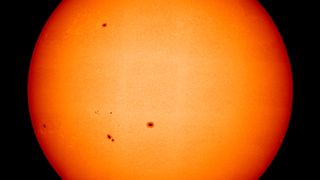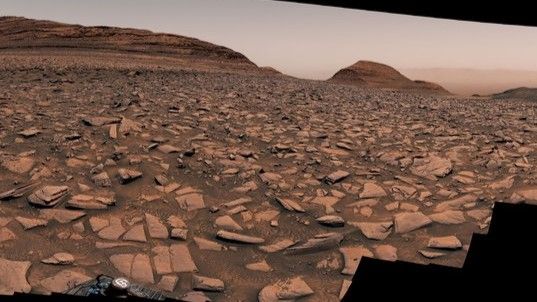The Solar Orbiter spacecraft has sent home the highest resolution images of the sun's surface to date, providing fresh views of our well-studied star.
On Wednesday (Nov. 20), the European Space Agency (ESA) shared four new images the spacecraft took in March of last year, when the probe was roughly 45 million miles (74 million kilometers) away from the sun. These images capture in detail the sun's dynamic and grainy surface, known as the photosphere — the layer that emits the sunlight we see.
The Polarimetric and Helioseismic Imager (PHI), one of six instruments onboard the spacecraft, imaged the granules on the sun's surface, which are large, turbulent cells of plasma, each spanning roughly 620 miles (1,000 kilometers).
These granules are created by convection — the process by which hot plasma rises from the sun's depths and cooler plasma sinks, similar to bubbles forming and rising in a pot of boiling water. The cells cover the entire sun's surface, with the exception of sunspots, which are darker, cooler regions that appear as blemishes against the otherwise smooth photosphere.
The image below is a new map of the sun's magnetic fields, also from PHI. It reveals the magnetic fields to be particularly strong and concentrated in the sunspot regions. This helps explain why sunspots are colder than their surroundings — intense magnetic fields there restrict the normal convection of plasma, and force the substance to follow the magnetic field instead. As a result, some of the heat is prevented from reaching the surface, causing sunspots to be colder than elsewhere on the sun's surface.
"The sun's magnetic field is key to understanding the dynamic nature of our home star from the smallest to the largest scales," Daniel Müller, the ESA project scientist for Solar Orbiter, said in a statement.

Another new map, called a tachogram, shows the speed and direction in which material on the sun's surface moves. In the image below, blue regions are moving toward the Solar Orbiter while red regions are moving away, depicting the sun's rotation about its axis. Magnetic fields can be seen breaking through the surface in sunspot regions.

Solar wind escapes from the sun's outer atmosphere, the corona, which was also imaged last March by the Extreme Ultraviolet Imager (EUI) instrument onboard Solar Orbiter. In the image below, the magnetic field lines can be seen sticking out from the sun's surface.
Wisps of plasma protrude out of the sun along these lines, often connecting neighboring sunspots. These loops of plasma are routinely ejected into space, forming charged-up solar wind that can trigger glowing aurora displays on Earth, Mars and other planets.

Solar Orbiter is currently about 75 million miles (120 million km) from the sun, just beyond the orbit of Venus, according to a spacecraft tracker run by ESA. The spacecraft, in collaboration with NASA's Parker Solar Probe, recently offered fresh clues to a long-standing mystery about how the solar wind heats up and accelerates to incredible speeds in space.
This summer, from inside the orbit of Mercury, Solar Orbiter also accomplished a key objective of tracing a pocket of solar wind back to its source on the sun by finding unique "footprints" in streams of solar wind that are typically smeared out by the time they reach Earth.
The latest mosaics are composed of 25 images each, captured over a span of roughly four hours, according to ESA. The probe's proximity to the sun meant each image covered only a small portion of the sun's disk, so the spacecraft had to be tilted and rotated until the entire sun was imaged. The images were then stitched together to achieve the full-disk, 8000-pixel mosaics.
"The image processing required to obtain the PHI mosaics was new and difficult," the agency said in the statement. "Now that it has been done once, processing the data and assembling mosaics will go faster in the future."
The probe launched in 2020 on a joint European-NASA mission to gather never-before-seen views of the sun's poles. Those images won't come until early 2025, when the spacecraft's orbit will allow it to achieve a higher inclination and provide a direct view of the sun's poles.
.png)
 German (DE)
German (DE)  English (US)
English (US)  Spanish (ES)
Spanish (ES)  French (FR)
French (FR)  Hindi (IN)
Hindi (IN)  Italian (IT)
Italian (IT)  Russian (RU)
Russian (RU) 









Comments